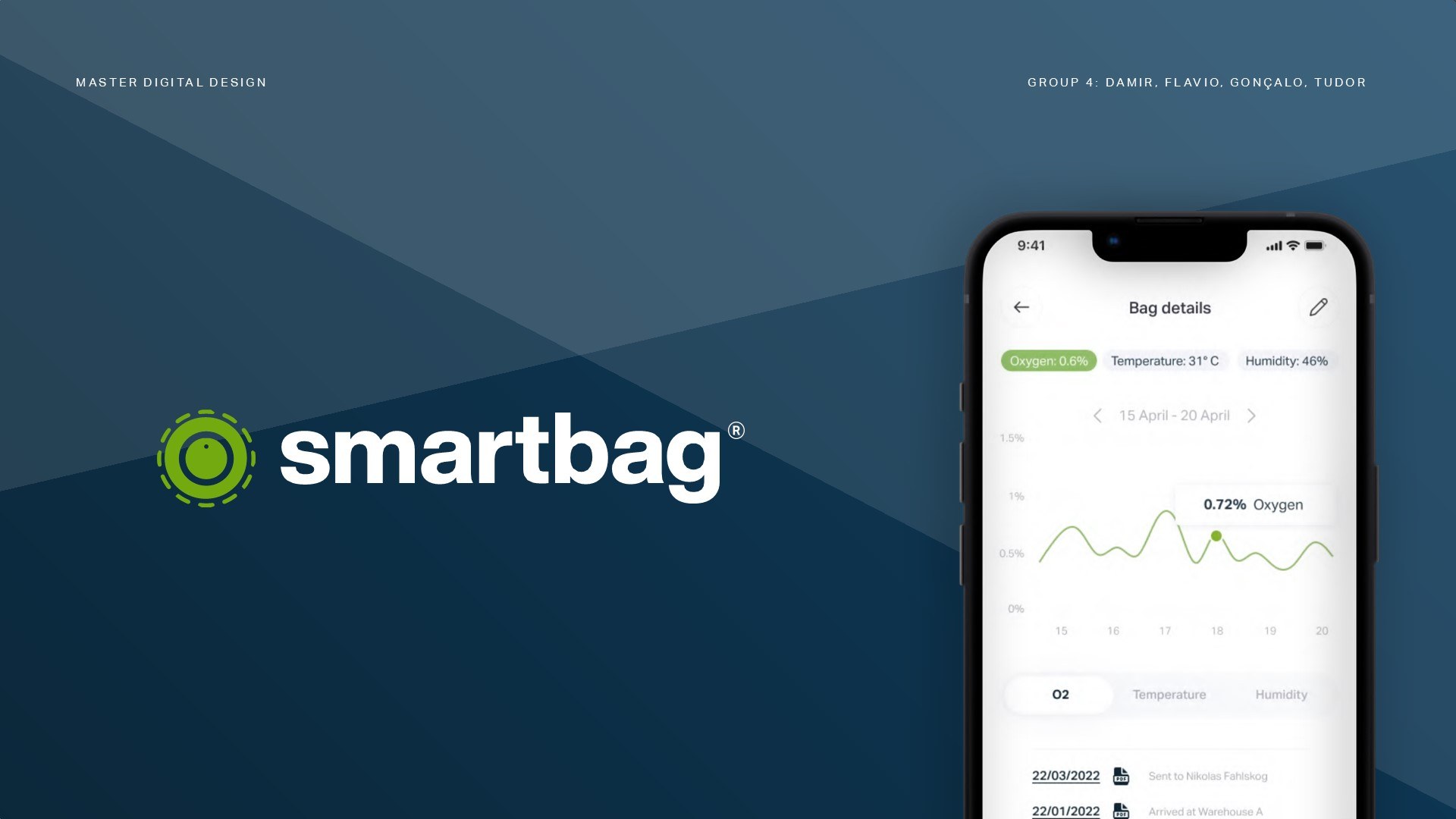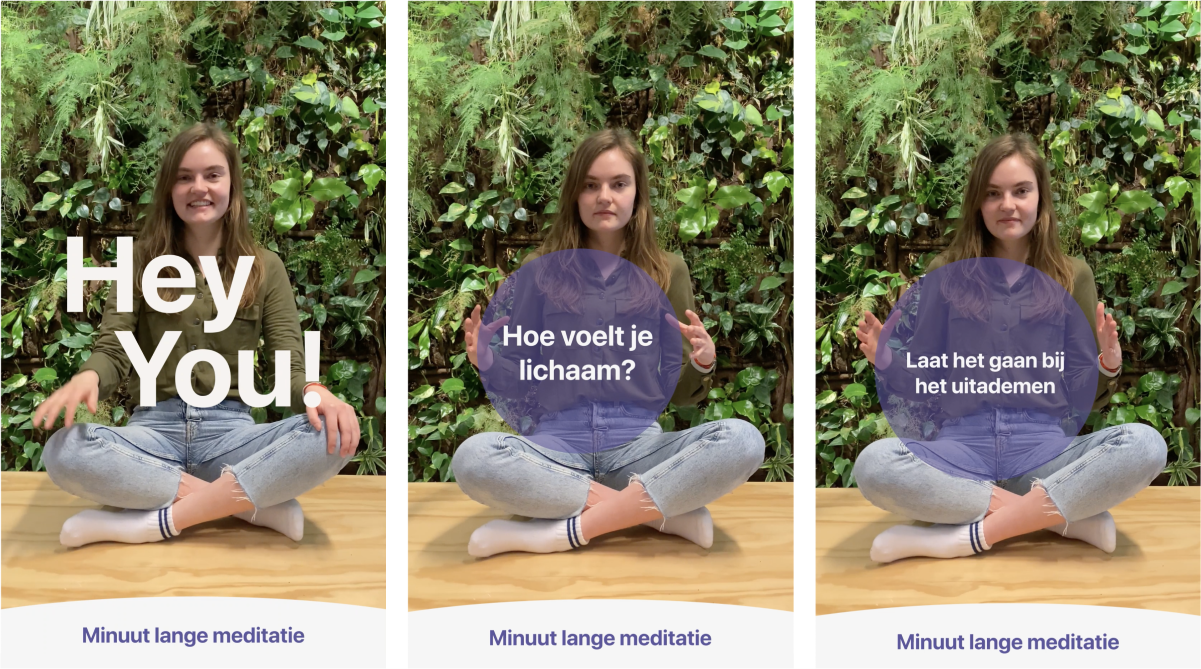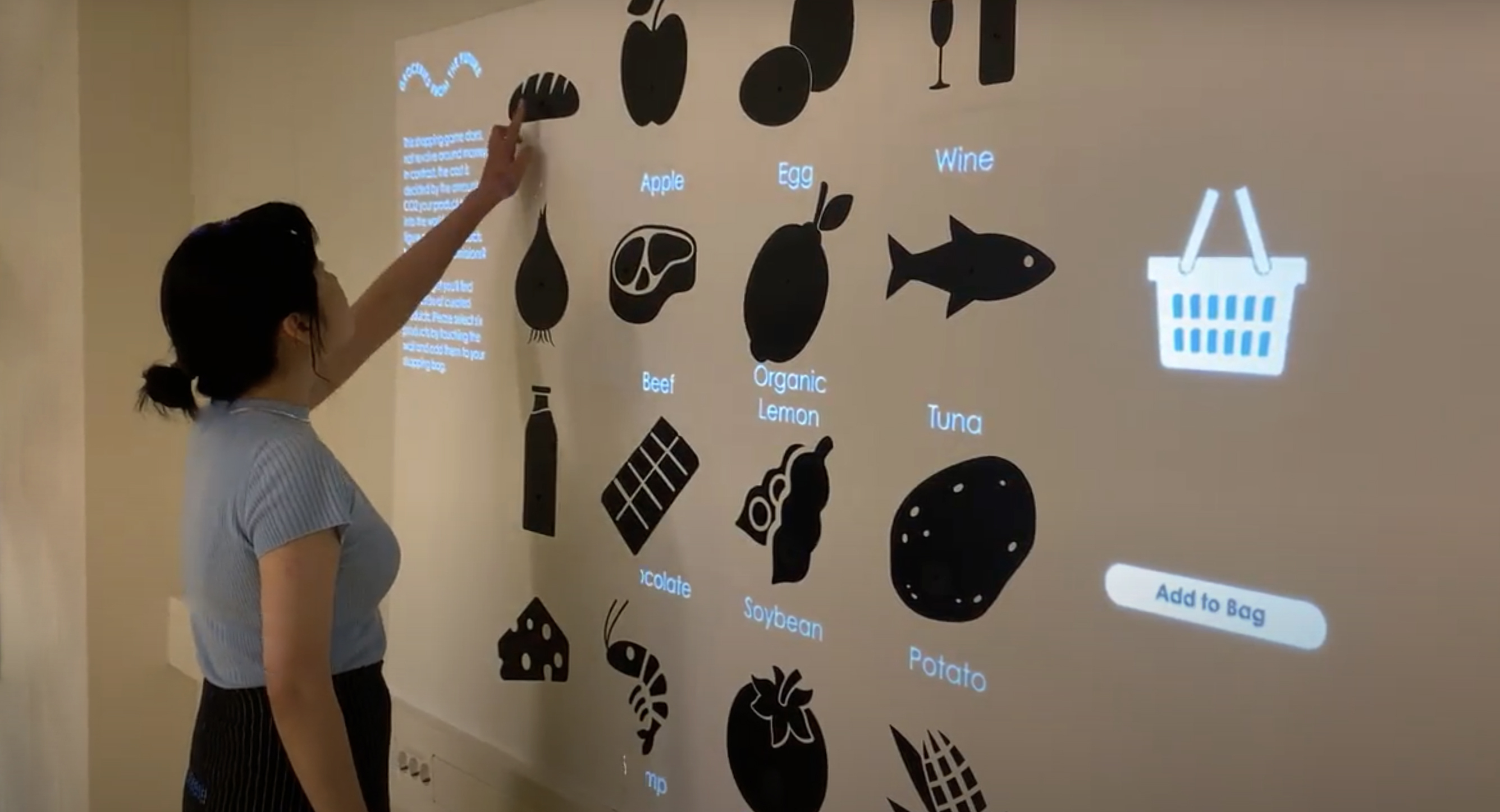
SmartBags
The most sustainable way of transporting food ingredients
-
Client:
AUAS
- Team:
-
Disciplines:
UX/UI, Product Design
-
Schoolyear:
2021-2022
Food supply chains are plagued by logistical problems from production to manufacturing all the way to the consumer, which makes the economy of the food industry not circular at all. One such problem is that during transportation food ingredients get deteriorated due to bad conditions and lack of monitoring. To solve this problem, our client created sophisticated sensors to measure with high precision the food variables during its transportation. To view the data collected from the food sensors, our client created an app. Our challenge is to elevate the service design of our client's current mobile application to the client’s desired new features’ integration.
Our client already created a mobile application to complement these sensors. However, only a few basic features are conceived. This client is in the stage about to launch a robust product to the market, and thus, the desire of the client is to integrate more advanced features of this app, which the client frames as a “2.0 version” of their concept.
We had questions: What are these new features? What features does this app already have? How can we make the experience of this app easy?
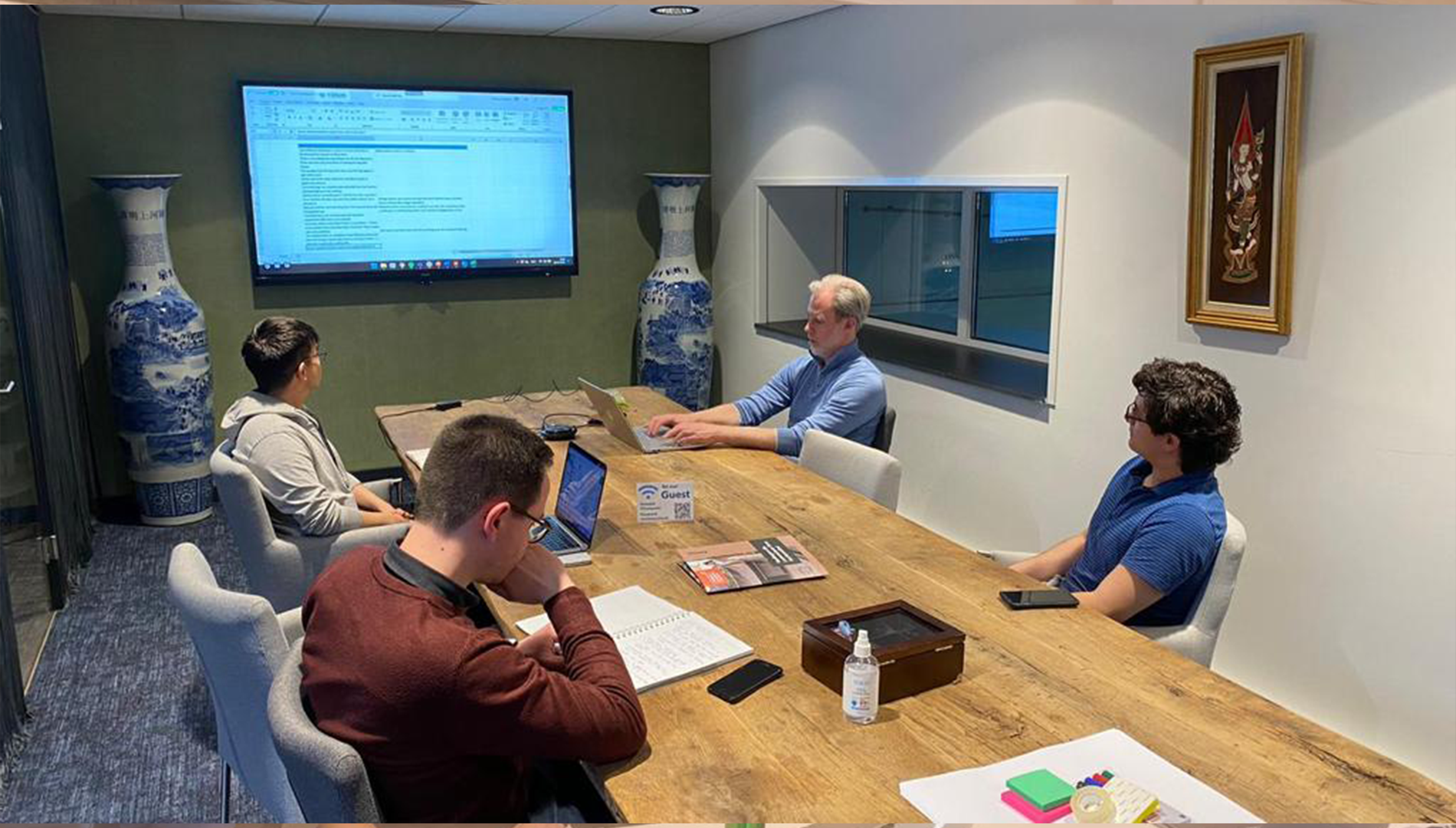
The 2.0
There is a big margin of improvement in the way food ingredients are monitored during and after travels. Variations in the chemical products impact the way these products arrive. Together with the client wants to launch a unique needed service that complements its already created sensors into a full-working app.
The client suggested investigating the ways that could be easy, effective, and coherent ways for the target groups to use the app of the service, aiming for a circular economy.
We created a full new version of an app that allows the implementation of all features the client had envisioned into an easy, effective, and coherent way to use an app that completely matches the data retrieved by the sensors. Subsequently, we created a service blueprint to elevate the service of the company.
A sustainable start
In the beginning, our challenge was not clear. We were not familiar with the jargon of the industry, and the technicalities of the sensors and we were not sure about the main objective of the design project, we were not even familiar with the way food ingredients are transported. Did we have to create a completely new app? And what is the context of the market? It was really difficult and we were struggling to understand such a complex market with so many intervenient factors. Furthermore, it is a highly niche market that was difficult to access. We were lost.
Having constant meetings with the client and researching the context made us more aware of the topic, especially, in regard to the overall product journey of food ingredients.
The moment of great acknowledgment was particularly clear once we decided to prepare a workshop at the company, where the results allowed us to understand the market, the design job, the target group, and the features that needed to be implemented.
Our job became crystal clear, which is exclusively to improve an already existing mobile application with new features the client already aspired for.

Designing the main solution
This was not a project to be highly out-of-the-box, but more straight to the point and coherent the whole process. By being aware of the context and the previous version of the mobile application, we firstly mapped out a product journey where the desired features can be integrated into the overall service of the company. Then, we had ideation sessions on how we could generally integrate these desired features into the overall service of the company.
Then, we had ideation sessions to incorporate these features into the already existing mobile application. Afterward, we created several wireframes to put these ideas into practice. After, we tested the wireframes with the relevant target group and upgraded the prototype according to the valuable feedback.
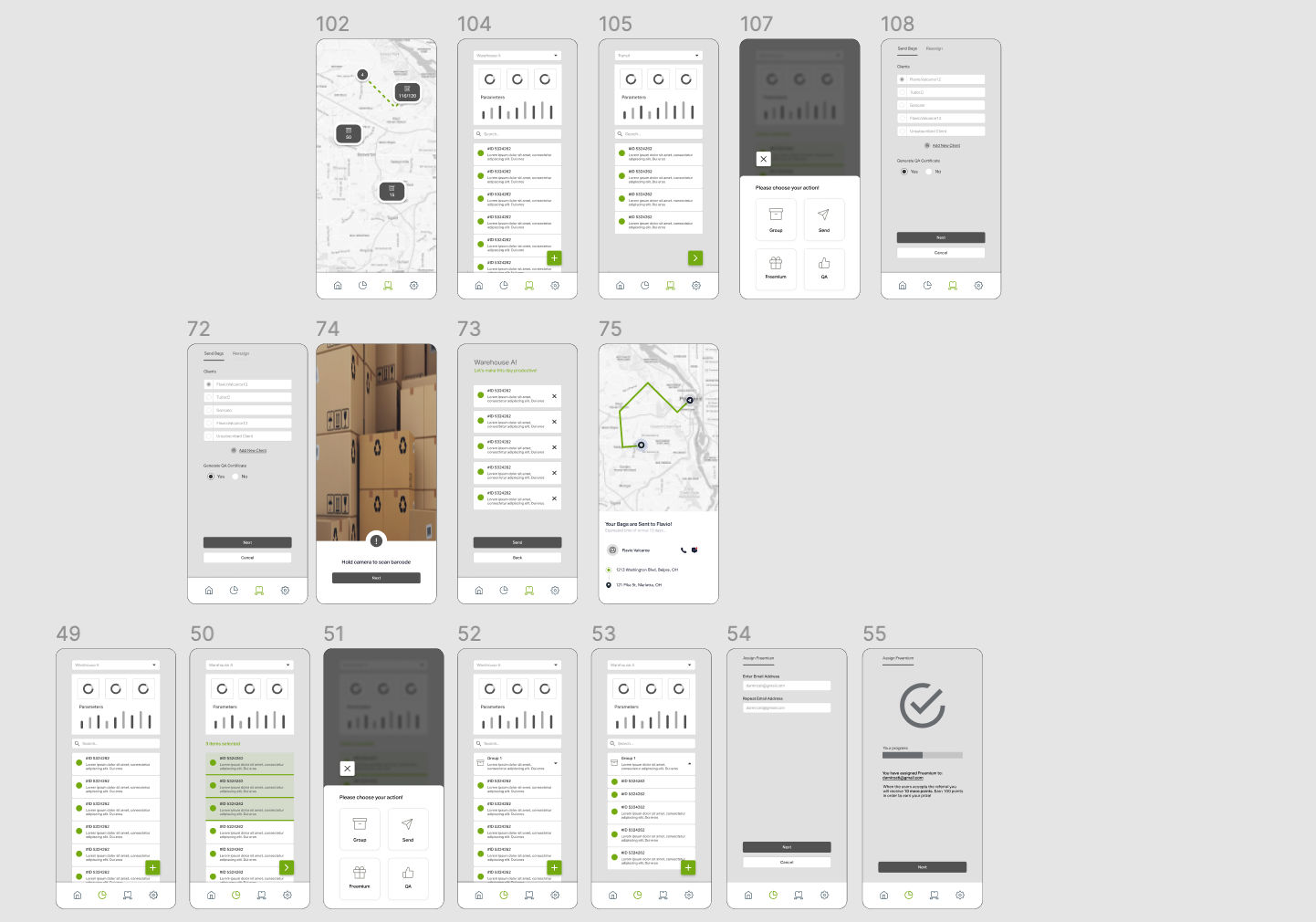
Prototyping and testing
We started with a range of wireframes that elements of the team were doing, then we discussed these ideas internally and filtered them. There was a constant improvement process of these wireframes where within the team we created an ecosystem of constantly asking questions, feedback, and improvement. Once we were done with the first versions of wireframes, we tested with the target group or relevant people that knew the context. The feedback was highly positive with few remarks, that we valued and integrated into the solution. Later, we created the high-fidelity version of the app bounding the previous features of the company to the newer ones.

Transporting food in the most sustainable way
Powered by these sensors our team designed a mobile application with the desired client features that provide full traceability over the transport of food ingredients, in an easy, efficient, and coherent way.
This app impacts the current service of the company, and therefore, to complete this mobile application, our team suggested a new service approach that this company can have, in each step of the customer journey. This makes the company more prepared to adjust its service in a clearer visualized manner.
The intertwined solutions give the client the tools to prepare for the next steps of the company, and subsequently, with the efficiency and monitoring induced by the solution, it is expected the food industry to become more sustainable.
Wasting does not need to be the only option. We deserve food at its best. Now, we finally have the tools to enable food ingredients into a circular economy.

